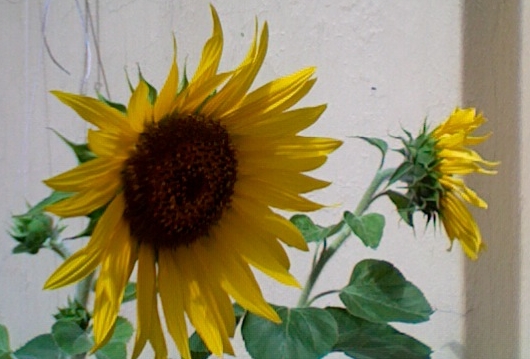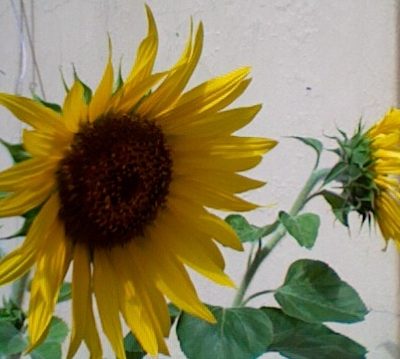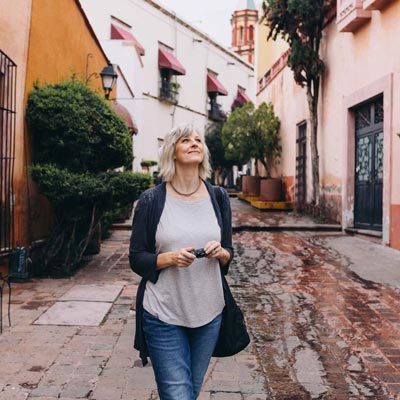
Cultivating a Nomadic Garden
March 22, 2011 | Hobbies
Gardening is in my blood. My grandparents were farmers, and my mom is an avid gardener (and long ago convinced my dad to join her). I grew up shucking corn on my grandparents’ farm in Minnesota, picking vegetables in our garden, pulling weeds, laying sod, and having to wait to eat dinner until there wasn’t a glimmer of daylight left to garden by.
I wouldn’t say the green thumb was passed down, exactly: since I’ve been on my own, I’ve neglected, overwatered, and outright killed my share of plants (I still feel bad about the basil plant a college friend left with me for the summer, which I left to fry on a super-sunny windowsill). In recent years I have begun to follow the process of gardening trial and error a bit more closely, and I think I’m improving. I enjoy the process, and I find that the time I spend watering and caring for my plants helps me slow down, relax, and appreciate the little things—slight changes in growth depending on where I place the containers, the cycle of the seasons…
I’ve long dreamed of having my own full-blown garden, yet that often seems like a rather pointless dream for a nomad like me. Last year, for example, I planted a bunch of seeds given to me by a friend, then was gone for five weeks and missed the dazzling display of sunflowers and other blooms (a friend sent me pictures).
Growing a garden seems like the antithesis of a nomadic life, doesn’t it? But in my Nomadtopia, I want it all. I’m determined to find ways to enjoy my domestically inclined hobbies, like gardening and knitting, even while I’m on the road. I’m learning that the key is to focus on enjoying the process, and accept that you might not get to reap the rewards directly. There are still other ways to cultivate a nomadic garden.
First, if you’re not willing to give up your home garden altogether, you can at least make it more nomad-friendly: Choose plants that are resistant and hardy and don’t need a lot of care. Outside plants, placed somewhere they will receive rain, are better than house plants, which have no chance of getting watered unless someone comes to water them! Before you hit the road, give them away (or loan them) to willing friends so they get more attention.
Living a more nomadic life, you actually have an even greater chance to experience plants’ life cycles: starting in the U.S. or Europe, you could help a friend sow seeds in a community garden, enjoy asparagus from a Couchsurfer’s garden, go berry-picking, then arrive in the Southern Hemisphere in time to enjoy spring blooms and WWOOF your way through summer, enjoying the harvest before heading back to another spring up north.
If you don’t have any home base/garden whatsoever and are in full-on travel mode, you’ll find that gardening and travel actually go great together: you can learn about local species and different growing seasons as you travel, so the plants mean more to you the next time you see them in a gardening center (or on a hiking trail). Wherever you are, gardening—or simply paying attention to local flora—is a great way to connect with the land, slow down, and observe the little things, like flowers blooming at different times as you move north or south.
If you’re going to be setting up a home base somewhere else for a while, buy or plant some local plants (you can give them away when you leave—in fact, this is how I’ve acquired virtually all of the plants I have in Buenos Aires), and maybe you’ll even be able to stay put long enough to see them through a full season. Explore what’s unique about the flora where you’re staying—for example, I have a friend who’s built a blog around her fascination with the trees in Buenos Aires.
Here are some specific ways to find gardening opportunities on the road:
- Visit friends and family who garden; they will always be more than happy to have your help (especially if you show up at a labor-intensive time of year!).
- Add the keyword “gardening” to your search on Couchsurfing to find like-minded hosts who wouldn’t mind if you poked around in their gardens a bit.
- Investigate opportunities through farming organizations such as WWOOF (World-Wide Opportunities on Organic Farms), which can help you find work on an organic farm in exchange for room and board.
- Look for national and state parks and botanical gardens at your destination that offer short-term volunteer opportunities, such as the National Tropical Botanical Garden, which has a Vacation and Volunteer program on Kaua’i.
If you’re a gardening nomad, remember that even if you don’t stay in one place long enough to follow any one plant or garden from start to finish, you can still get your hands dirty, learn about local plants, and enjoy the harvest.
Get the Top 10 Logistical Things You Need to do before becoming a nomad
(That Aren't What You Think)
When you download the guide, you’ll also be subscribed to the Nomadtopia newsletter. Your email is safe with me and you can unsubscribe anytime. View our Privacy Policy.



